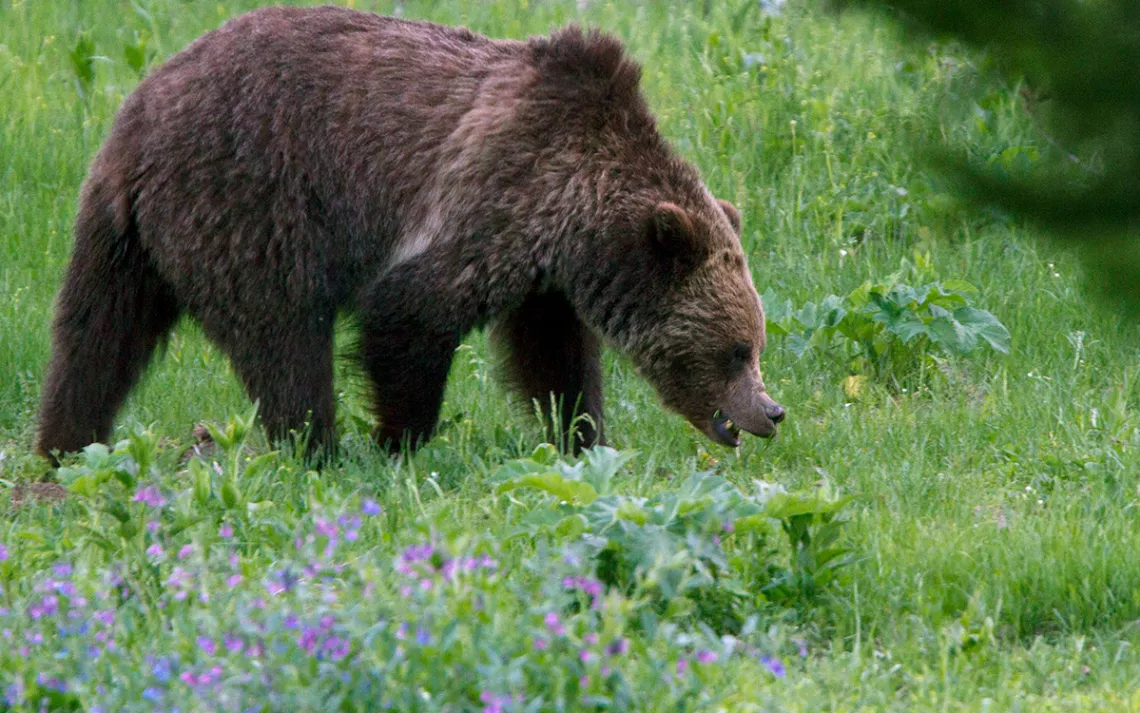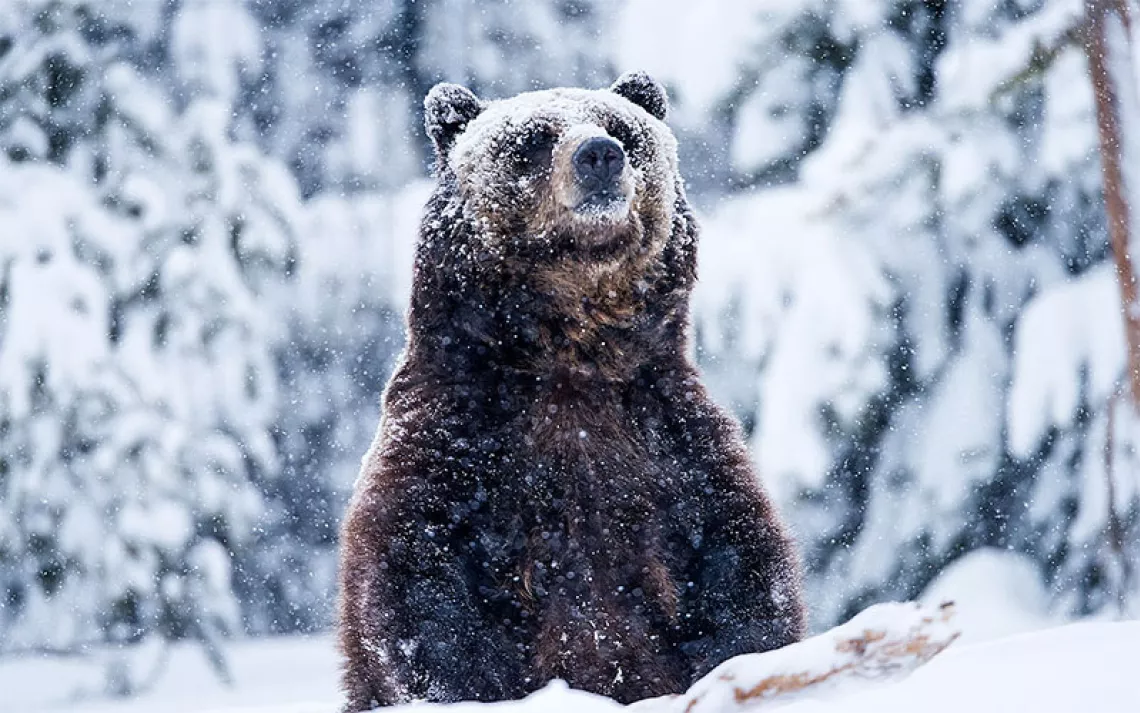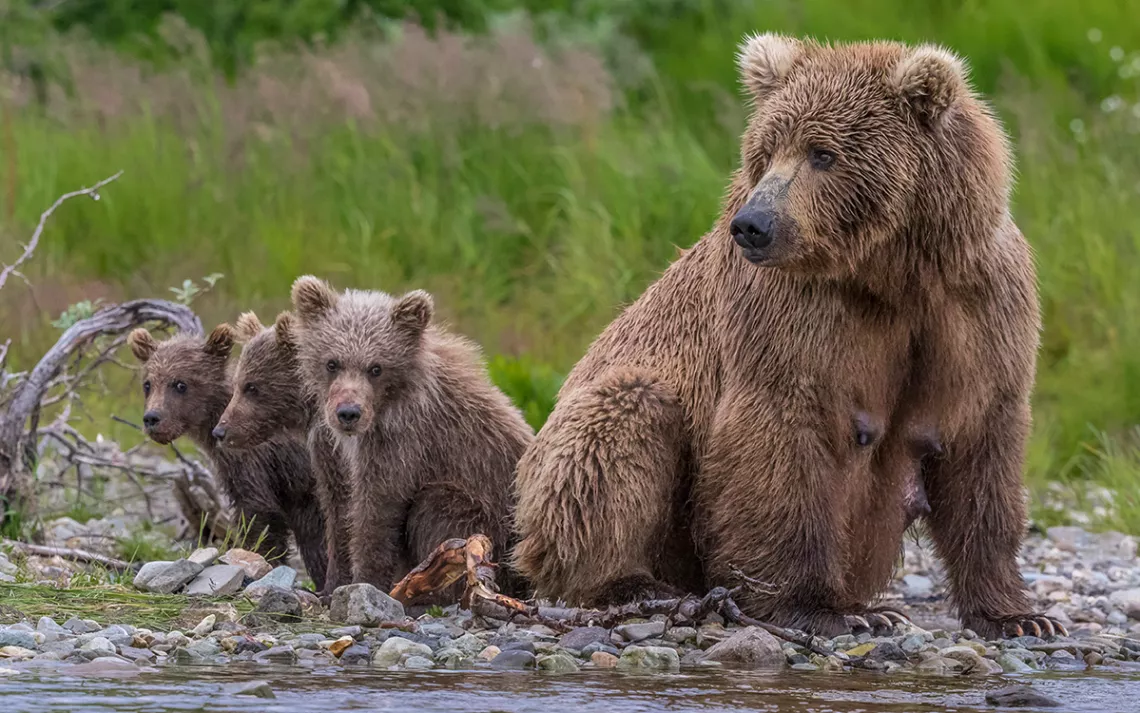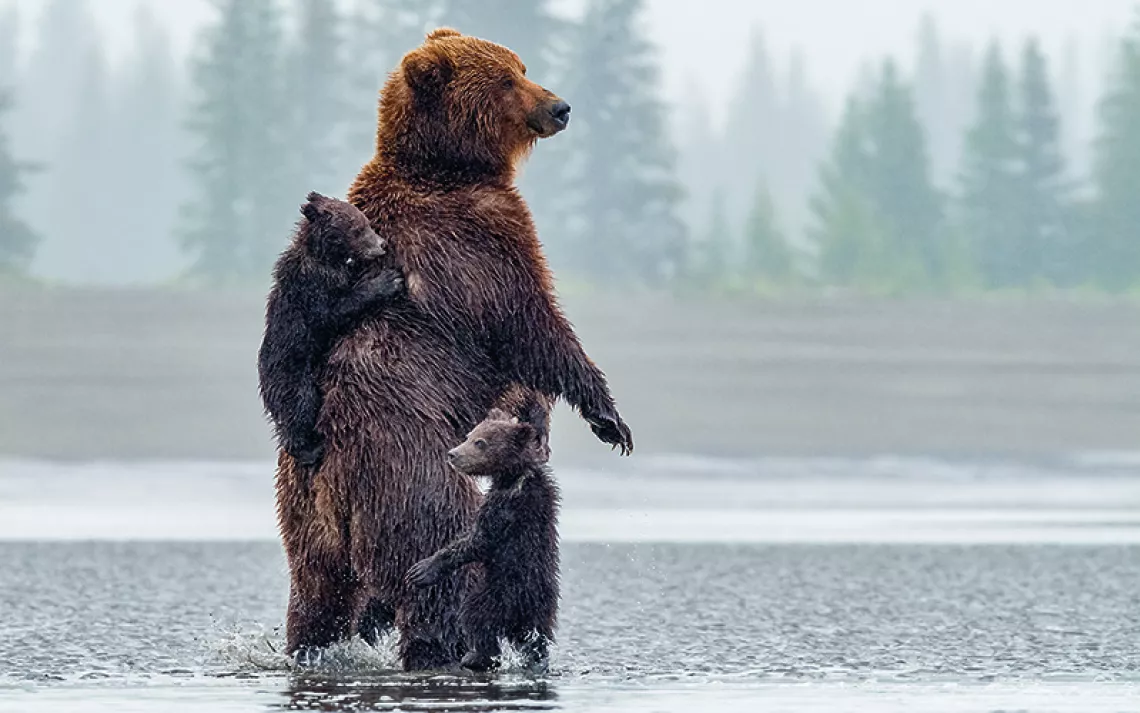Grizzly Bears Are One Step Closer to Losing Federal Protections
Idaho, Montana, and Wyoming seek to expand hunting to keep populations to bare minimum

A grizzly bear in Yellowstone National Park. The Interior Department announced that it might consider lifting federal Endangered Species Act protections, which will allow Montana and Wyoming to hold hunts outside park boundaries. | Photo by Jim Urquhart, AP/File
The Biden administration is mulling over whether to remove Endangered Species Act safeguards for grizzly bears in the Northern Rockies—a move that wildlife advocates warn is premature and would jeopardize the bears’ full recovery. The US Fish and Wildlife Service announced that it would review delisting proposals earlier this month after receiving petitions from Idaho, Montana, and Wyoming requesting that those states’ fish and game departments be allowed to take over management of the iconic carnivores.
Conservation groups and wildlife advocates quickly blasted the proposals, arguing that those states have not proven reliable stewards of another iconic species—the gray wolf—and that they shouldn’t be entrusted with managing the region’s isolated pockets of grizzly bears.
“While important steps have been taken to bring grizzly bears back from the brink of extinction in the Northern Rockies, they are still a long way from being fully recovered,” said Bonnie Rice, the wildlife campaign manager at the Sierra Club. “Removing federal protections now would be a huge mistake and a giant step backward. States have proven that they are not to be trusted in managing native carnivores—we have only to look at what has happened with gray wolves. Grizzly bears would be next on the chopping block, should federal protections be stripped."
Since gray wolf management was turned over to those state governments, wolves in the Rockies have been persecuted to a degree not seen since the 19th century, with bounties, chokehold snares, and night-vision scopes all available to hunters as the states try to reduce the number of wolves drastically. Idaho Fish and Game estimates that the wolf population has dropped by 13 percent over the past year since some of the state’s expanded hunting measures went into effect. And in neighboring Montana, a fifth of the Yellowstone wolf population was killed over a similar period.
Each state submitted its own separate petition to remove Endangered Species Act protections from grizzlies. Montana would like to see bears around Glacier National Park and the Northern Continental Divide Ecosystem delisted and classified as their own “distinct population segment”—that is, a population that by definition is separate from other bear populations by distance, environment, or physiology. Similarly, Wyoming submitted a petition to delist bears around Yellowstone National Park, and officials there would also like to see bears in the Greater Yellowstone Ecosystem classified as its own distinct population segment. The Idaho petition sought to delist grizzlies throughout the entire continental United States. US Fish and Wildlife Service denied their petition because it did not present credible information that warrants further review. The agency plans to undertake a one-year review of the Montana and Wyoming petitions.
In their petitions, the governors of Montana and Wyoming both argued that grizzly bears in the region have met the recovery criteria and no longer need federal protections. Scientists and bear advocates have a different opinion. They say that while the number of grizzlies in the region have increased, true species recovery is about more than numbers. Chris Servheen, a retired USFWS grizzly bear recovery coordinator in Montana, says real recovery requires keeping populations healthy and interconnected to ensure genetic diversity.
“It's really not a conservation plan for grizzly bears,” Servheen said of the Montana petition. “It's a hunting plan for grizzly bears, and it’s really unfortunate that the whole plan is so hunting-centric and does not concentrate its efforts on ways to minimize conflicts with bears and build public understanding of bears.”
In Montana’s draft management plan, the word hunting is used nearly 400 times. And one of the fundamental objectives of the state’s plan is to, “[m]aximize public agreement on the role of hunting.”
Each state’s draft plan defers to its individual wildlife commissions when it comes to setting hunting objectives and rules. And that has wildlife advocates worried as state lawmakers and wildlife officials in those states have put in place policies that have been detrimental to native wildlife. For instance, legislators in Montana have passed a law that allows individuals to kill bears if they merely feel threatened—which is a hard standard to enforce given the varying degrees to which some people feel threatened by wildlife, said Erin Edge a senior representative at the Defenders of Wildlife Rockies and Plains Program.
As USFWS decides whether to remove grizzlies from the endangered species list, agency staff will have to evaluate such hunting policies and weigh them against any proposed or existing regulations that might reduce threats to future recovery. Fish and Wildlife staff will also have to consider the importance of connectivity among the six distinct recovery areas in the region. Wildlife conservation advocates say that what happens outside those areas could prevent a robust recovery.
“The states don't seem to want bears outside of those recovery zones, and to continue to expand and to reconnect,” Edge said. “For long-term resiliency and health of those populations, we'd like to see them connected. Connection is important. It's critical for long-term resiliency of those populations.”
If the agency determines that grizzlies do warrant delisting, agency staff will have to start a new rulemaking process that will include feedback from biologists and comments from the public. And then states will have to ensure they’re capable of managing bears by curtailing some of the worst hunting methods that are antithetical to recovery. However, at this stage, the states have cleared the lowest bar to remove federal protections, and USFWS may still very well keep grizzlies listed as threatened under the ESA to ensure that true recovery is feasible.
“Recovery is more than numbers of bears,” Servheen said. “You can have the numbers of bears, but if you don't have the adequate regulatory mechanisms in place, you can't pull the endangered species rug out from underneath the species. Because without regulatory mechanisms, the population would easily crash.”
 The Magazine of The Sierra Club
The Magazine of The Sierra Club



